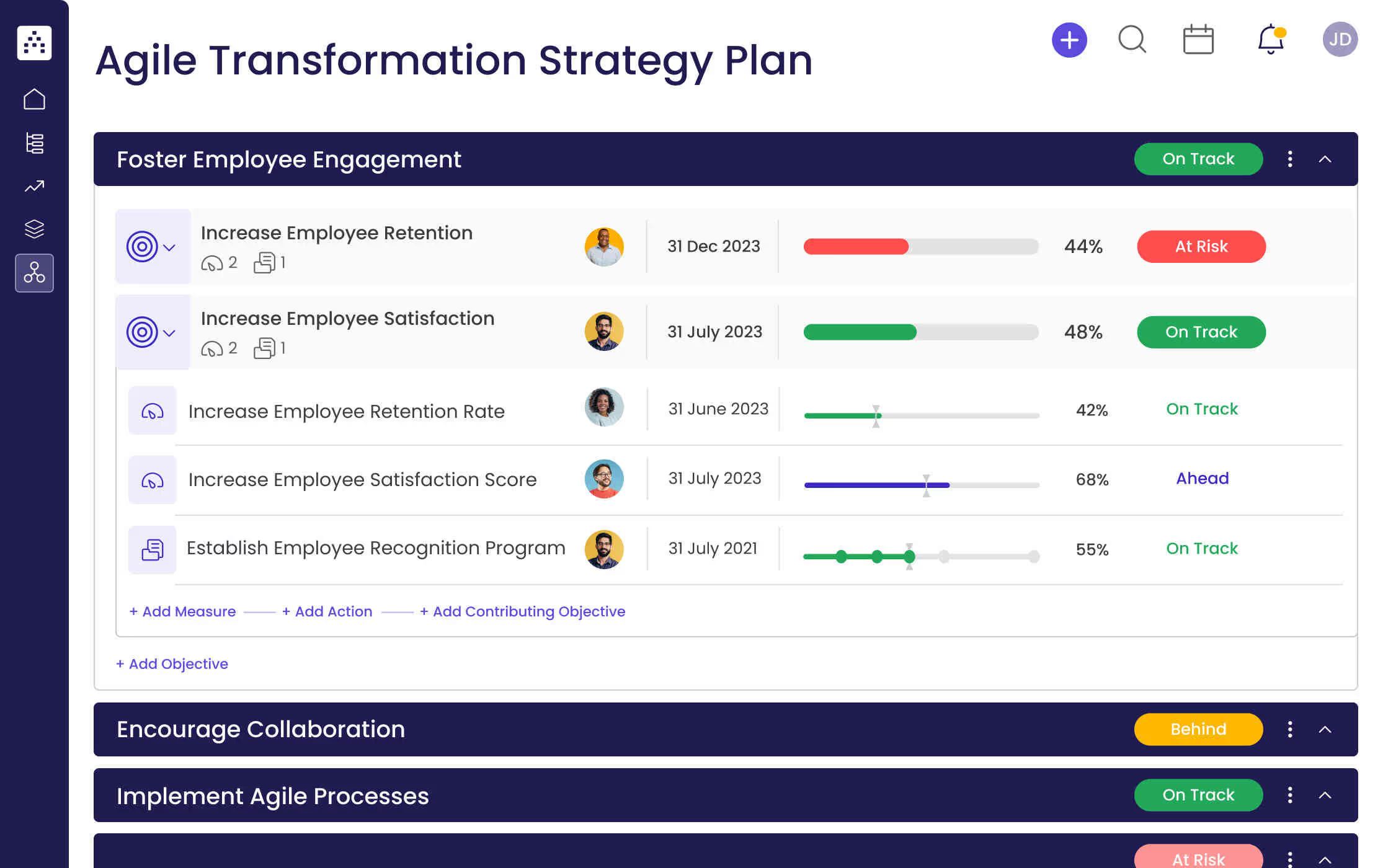What is an Agile Transformation Strategy?
An agile transformation strategy is a comprehensive plan for organizations to adopt agile principles and practices across departments, fostering flexibility, collaboration, and iterative improvements. It outlines the objectives and actions that an organization should take to become agile, as well as the key performance indicators (KPIs) to measure their progress. Implementing an agile transformation strategy can help organizations become more efficient, reduce costs, and increase their overall competitive advantage.
What's included in this Agile Transformation Strategy template?
- 3 focus areas
- 6 objectives
- 6 projects
- 6 KPIs
Each focus area has its own objectives, projects, and KPIs to ensure that the strategy is comprehensive and effective.
Who is the Agile Transformation Strategy template for?
This agile transformation strategy template is designed for organizations that are looking to create a comprehensive plan to adopt agile principles and practices. This template provides a framework for outlining key objectives and actionable steps, as well as measurable KPIs to track progress and success. It is ideal for businesses of any size looking to become more agile and increase their overall efficiency and competitive advantage.
1. Define clear examples of your focus areas
A focus area is a broad area of interest that an organization is looking to address with its agile transformation strategy. Examples of strategic focus areas that could fall under a Agile Transformation Strategy could be: Foster Employee Engagement, Encourage Collaboration, and Implement Agile Processes.
2. Think about the objectives that could fall under that focus area
An objective is a specific goal that an organization is looking to achieve within a given focus area. These objectives should be SMART: specific, measurable, achievable, relevant, and time-bound. Examples of some objectives for the focus area of Foster Employee Engagement could be: Increase Employee Retention, and Increase Employee Satisfaction.
3. Set measurable targets (KPIs) to tackle the objective
Key Performance Indicators (KPIs) are metrics that organizations use to measure progress toward an objective. They should be measurable, quantifiable, and achievable. Examples of KPIs could include: Employee Retention Rate, Employee Satisfaction Score, Cross-Departmental Meetings, Knowledge Sharing Events, and Development Cycle Efficiency.
4. Implement related projects to achieve the KPIs
Projects (actions) are specific initiatives that organizations need to undertake in order to achieve their objectives. Examples of projects could include: Establish Employee Recognition Program, Create Empowerment Opportunities, Establish Collaboration Protocols, Host Regular Knowledge Sharing Events, and Establish Iterative Development Cycles.
5. Utilize Cascade Strategy Execution Platform to see faster results from your strategy
Cascade is a strategy execution platform that provides organizations with the tools necessary to effectively implement and track their strategies. With Cascade, organizations can easily create objectives and actionable steps, monitor progress, and track success. Cascade enables organizations to quickly and efficiently implement their strategies and see faster results.


